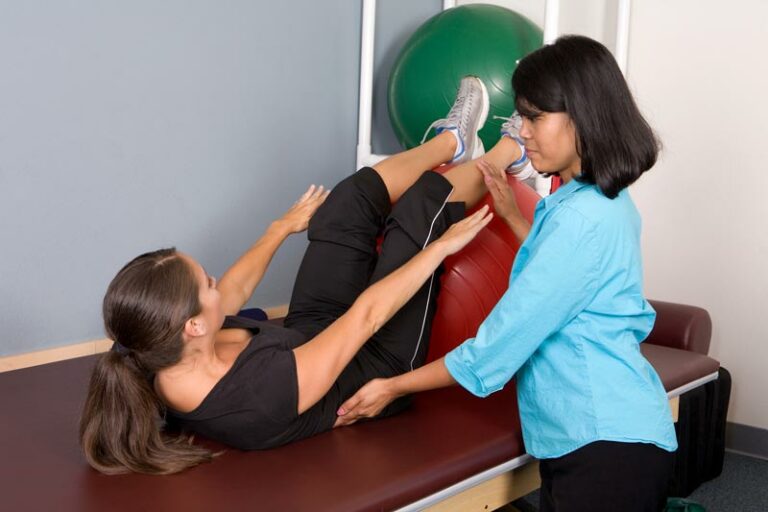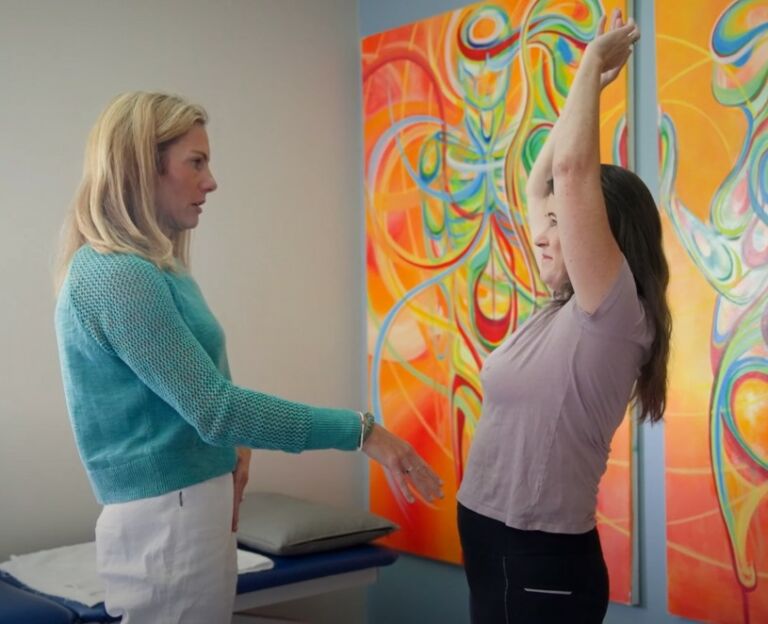What is Pilates-based physical therapy?
Pilates-based physical therapy is a holistic approach to rehabilitation that incorporates the principles of STOTT Pilates into traditional PT treatment plans. Developed by Moira Merrithew and Lindsay Merrithew, STOTT Pilates is a contemporary adaptation of Joseph Pilates’s method of rehabilitation, which he first used to help wounded soldiers in the early 20th century.
A physical therapist certified in Pilates-based treatment approaches patient care with the same focus on a thorough evaluation aimed at understanding the situation and getting to the root of the problem. This includes a series of tests and measures designed to uncover dysfunction in the musculoskeletal system that may be contributing to a patient’s pain or inability to participate in certain activities at the level they desire. From there, a patient’s plan of care incorporates Pilates-based exercises, finely tuned to address unique, individual needs.
Pilates, and STOTT Pilates in particular, includes exercises with a strong emphasis on core strength, posture, precise and controlled movement with proper alignment and muscle activation, and flexibility. There is also a focus on breathing and the mind-body connection. This distinctive approach to rehabilitation utilizes body-weight exercise, resistance or weights when appropriate, and sometimes incorporates specialized equipment such as a reformer. Pilates-based physical therapy is tailored to each patient’s specific problem and is carefully designed to suit individual fitness levels and body types, making it suitable for everyone.

Why choose Pilates-based PT?
Pilates offers a myriad of benefits, including improved posture, increased strength and flexibility, and enhanced mental focus. While a physical therapy plan of care that includes Pilates does not necessarily expedite recovery or rehabilitation, its focus on overall physical and mental well-being optimizes the journey. This approach ensures that not only the symptoms but also the underlying causes of discomfort are addressed, promoting comprehensive healing and well-being.

The exercise technique used in Pilates-based PT addresses the body as a whole and seeks to understand how various parts of your body might be contributing to the injury or painful area. The selected exercises are designed to target the right muscles at the right time, addressing any compensatory patterns that may have developed over time. Furthermore, Pilates-based therapy isn’t just for specific injuries; it can address a wide range of concerns, from pain and balance issues to gait problems. Through Pilates, you’ll learn how to move better, making your everyday tasks easier and more comfortable.
Pilates-based therapy provides enduring benefits. By concentrating on functional movement patterns and strength, Pilates-based therapy not only alleviates current issues but can also serve as a preventive measure against future injuries.
The best part is that all Pilates exercises can be modified for home use, allowing you to continue your progress independently.
Pilates is a well-established and effective approach to rehabilitation. Its incorporation into traditional physical therapy offers long-lasting musculoskeletal benefits, injury prevention, and a holistic approach to healing. By understanding the principles of Pilates and how they can be tailored to specific injuries, you can take an active role in your recovery and ongoing well-being. By integrating the principles of Pilates into your treatment plan, your physical therapist can create a path to a stronger, more resilient you.

